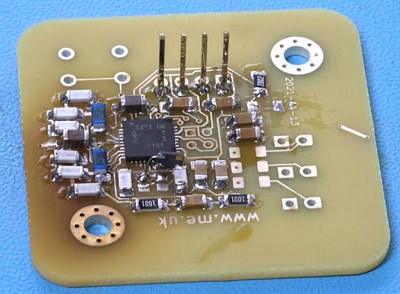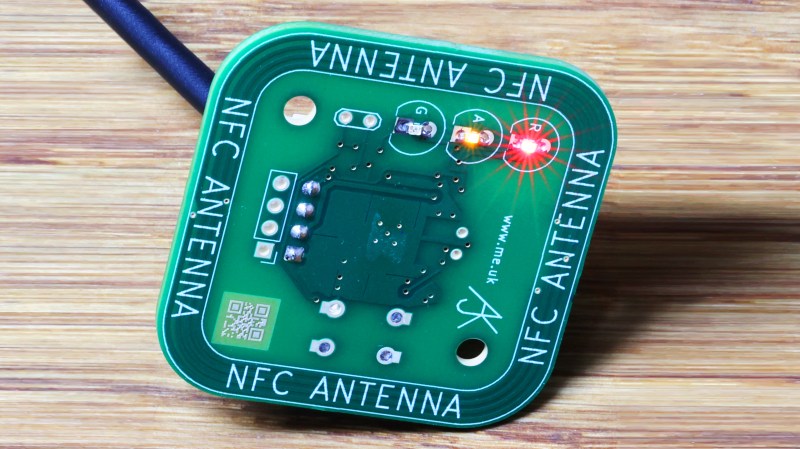
[RevK] wanted to learn about NFC readers, and we agree that the best way to do so is to dive in and build one yourself.
There are readers available from multiple sources, but [RevK] found them either compact but with no prototyping space or plenty of prototyping space and a large footprint. High-speed UART (HSU) was selected over I2C for communication with an ESP32 as testing showed it was just as fast and more reliable over long distances at the cost of only one additional wire.
After a few versions, the resulting PN532 based NFC reader has just enough GPIO for a doorbell and tamper switch and three status LEDs, with board files and a 3D-printed case design included in the open source project on GitHub. When looking into the project, we appreciated learning about tamper switches that can include closed or open contact status when an NFC is read, most often used in the packaging of high-value and collectible products. If you have worked with this tamper feature of NFCs, let us know about it.
Thanks for the tip, [Simon]















Tamperproof can be as easy a just wire loop connected to a I/O port and ground. If you want to detect if is shorted near the chip/board you need to add a resistor to Vcc on the I/O, a resistor in the far end of the wire loop. If the loop is ok you measure halve of Vcc (assuming equal resistance), if shorted 0V or Vcc if open. If a resistor is placed (to mimic the loop) the measured voltage is wrong (lower)
The best way is to use comperators to generate pure digital signals connected to I/O pins with wakeup/interrupts to detect fast changes (like cutting and quickly placing a resistor).
In theory simple but gory in the details :)
It’s already too late if someone sees the PCB.
I was referring to the link in the end ( https://www.youtube.com/watch?v=3uknXCNwjH8 ) and only to the the tampering part of the wire. security is like an union, with multiple layers. A good case for the reader and (several) tamperswitches inside the case will tackle that.
Like a i said gory details :)
The PN532 has been Not Recommend for New Designs for quite a while.
I’d say that the “not recommended for new designs” more relates to companies that may make large quantities of a product, since there may not be availability of the parts in the future. For a hobbist one off or hand full of products, use whatever you like.
HSU (High Speed UART) is not a common acronym so defining it would be helpful.
Agreed, updated! That being done, I’m having trouble finding a definition of High-Speed UART. This chip can do “up to 1.288 Mbit/s” but I wonder where regular UART becomes high-speed?
9600bps